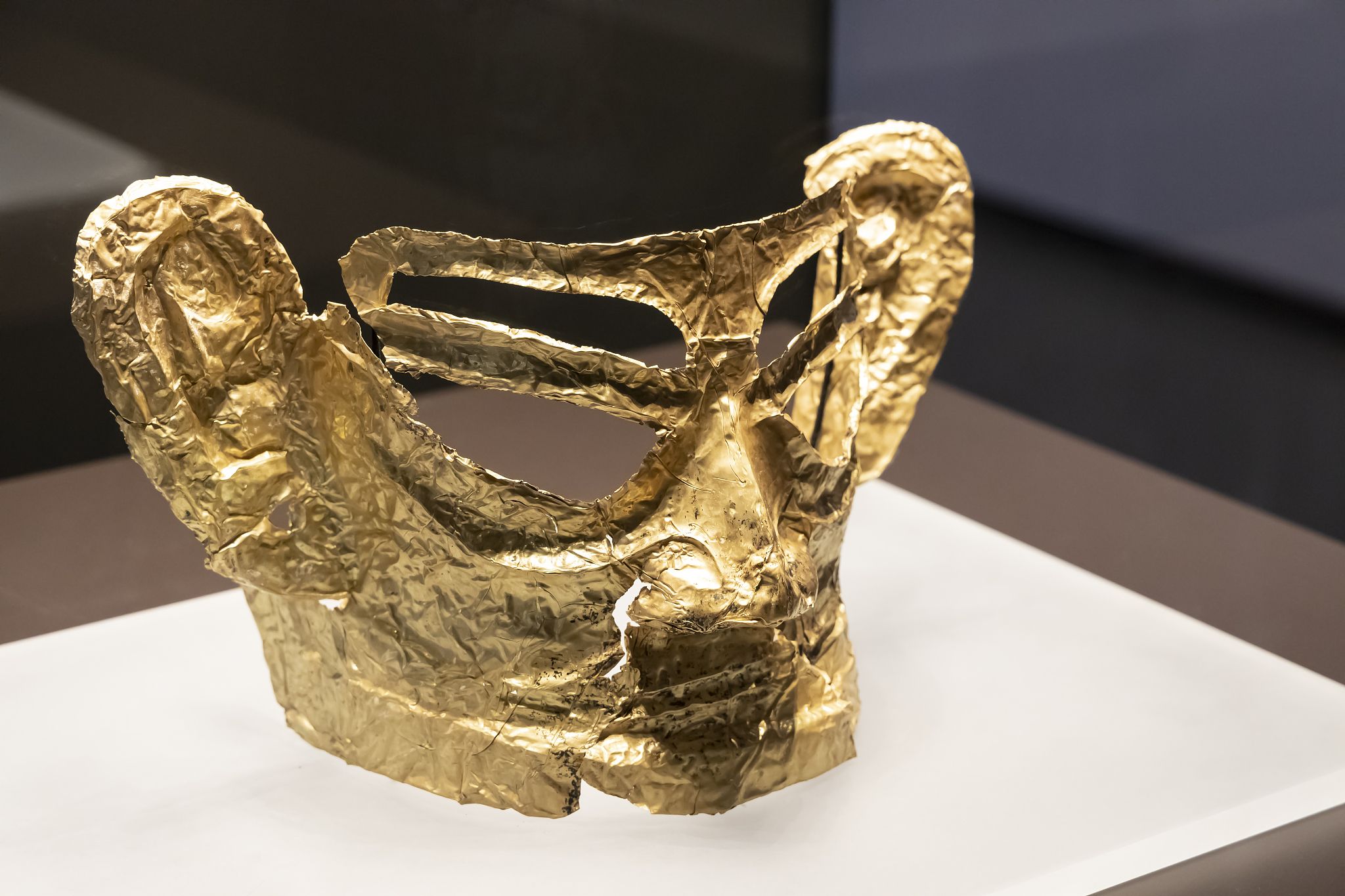
Sanxingdui is an archaeological site located in Sichuan Province in southwestern China. This site is famous for its exceptional discoveries. These have shed light on the ancient Shu civilization, a culture that thrived in the region more than 3,000 years ago. The Shu civilization is known for its inventions in bronzework and its distinctive artistic style.
The site was discovered in 1929 when some fragments of jade and bronze were found by chance. However, more extensive excavations began in the 1980s and revealed a number of surprising finds.
Among the most famous finds are large bronze figures, including masks and human heads with stylised features and large eyes, as well as animal figures. These sculptures demonstrate impressive artistic quality and advanced skills in bronze casting.
The Shu civilization flourished during the Bronze Age, roughly between 1600 and 256 BC. It was characterized, among other things, by its production of bronze. Among the most notable finds are large pieces and complex casting techniques that had not been seen in other parts of China at that time.
The Shu civilization appears to have had an advanced agricultural economy, with a complex social structure. Archaeological evidence suggests that they had an organized and developed society, with ritual practices and a rich material culture.
Although not much is known about their relations with other cultures of the same time, the Sanxingdui artifacts suggest that the Shu civilization had contacts and possibly exchanges with other regions.

Source: https://reporteasia.com/cultura/educacion/2024/07/20/sanxingdui-revelando-enigma-antigua-civilizacion-shu/

